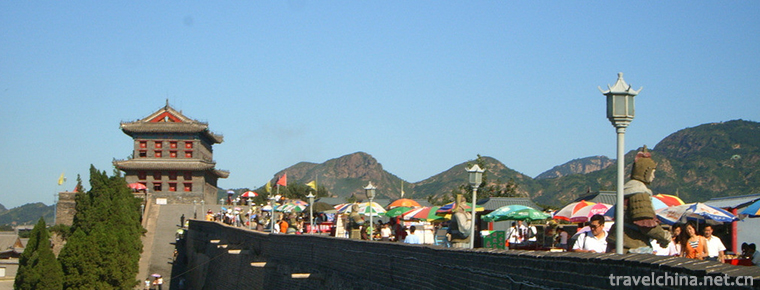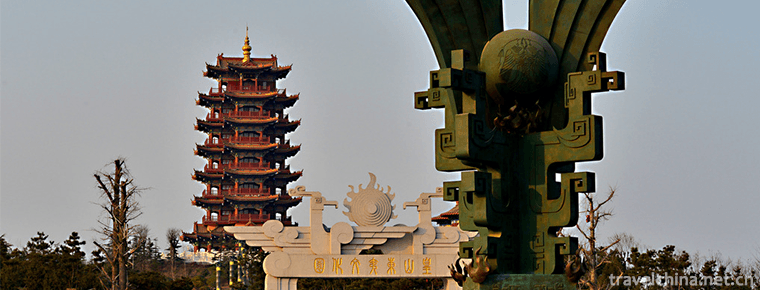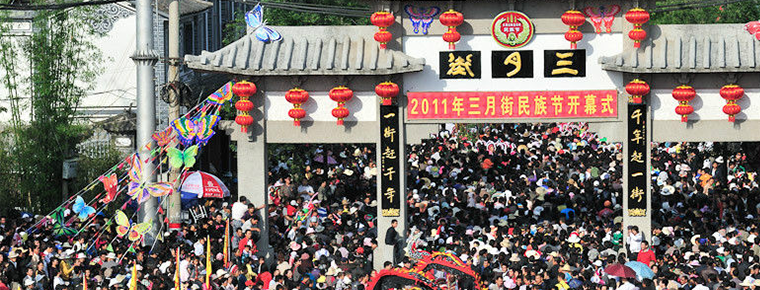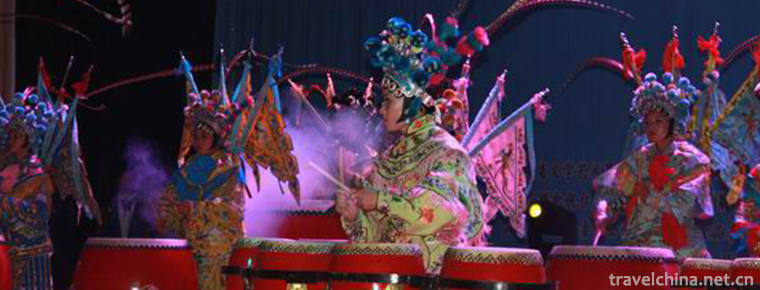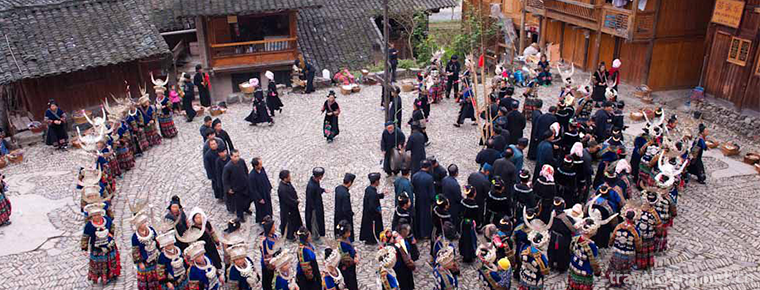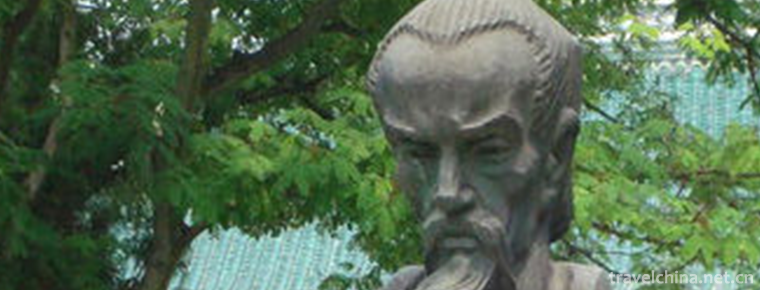Chaoyang Bird Fossil National Geological Park
Chaoyang Bird Fossil World Geopark is located in Chaoyang City, western Liaoning Province. Chaoyang is located at the junction of Liaoning, Hebei and Mongolia provinces in the throat of Chinese cock territory.
Chaoyang is a famous historical and cultural city with a history of more than 1700 years. It is the ancient capital of Sanyan. There are abundant tourist resources, including Chaoyang Bird Fossil National Geological Park, Pigeon Cave Ancient Human Site, Niuhe Liang Hongshan Cultural Site and other tourist attractions. Chaoyang is an excellent tourist city in China. It has a splendid Hongshan culture. It is known as "the first place where flowers blossom and birds fly in the world", and also has the title of "Oriental Buddhist Capital".
Located at No. 100 Longbird Street, Longcheng District, Chaoyang City, the park covers an area of 900 mu. The main geological remains are paleontological fossils, fossil-bearing strata and geological structures. Geopark consists of Shanghe Shougu Paleontological Fossil Park, Sihetun Paleontological Fossil Park, Lingyuan Dazhangzi Park (the main source of the famous "Jehol Biota"), AAAAAA Fenghuangshan Park and Huaishudong Scenic Area.
Development history
In August 1998, with the approval of the State Council, a national bird fossil nature reserve with an area of 46.3 square kilometers was established in Beipiao City, where paleontological fossils were discovered earlier and more species were found. To strengthen the management of paleontological fossil resources in Chaoyang.
In April 2002, in accordance with the spirit of the documents compiled by the city, we formally established the Chaoyang Paleontological and Fossil Resources Management Office, which is a subordinate department of the Municipal Land and Resources Bureau. It is mainly responsible for the management of paleontological and fossil resources within the municipal jurisdiction.
In July 2002, with the approval of the municipal government, Chaoyang Paleontological Fossil Group Nature Reserve was established, covering an area of 1,0128 square kilometers.
In 2011, the provincial government of the Municipal Party Committee decided to change the Chaoyang Paleontological Fossil Resources Management Office into the Chaoyang Bird Fossil National Geopark Administration Bureau of Liaoning Province, which is a public institution directly under the Municipal Government.
On December 7, 2015, Chaoyang Bird Fossil National Geopark declared the World Geopark.
In October 2018, it was appraised as the national practical education base for primary and secondary school students.
geographical environment
Chaoyang Bird Fossil National Geological Park, Liaoning Province
Liaoning Chaoyang Bird Fossil National Geopark is located at No. 100 Longbird Street, Longcheng District, Chaoyang City, where the earliest bird "Chinese Dragon Bird" and the flowering plant "Liaoning Guguo" have been found. Therefore, Chaoyang is known as the place where "the first flower blooms and the first bird flies" in the world, also known as "the source of flowers and birds".
Chaoyang Bird Fossil National Geopark has always been famous for its longest age, largest number, most species, richest horizons, highest scientific research value and the widest unknown area. It has the most complete system of "Jehol Biota" rare paleontological fossil resources in the world. It is known as "World Paleontological Fossil Treasure" and is a collection of scientific research, popular science and rest. Site theme park with leisure and entertainment as one.
natural resources
Chinese Dragon Bird Fossil
The skeletal structure has typical dinosaur characteristics. It's amazing that there's a line of hair-like dermal derivatives on the back of the body that covers the whole body from the head to the tip of the tail. The discovery of long-feathered dinosaur fossils, represented by Chinese dragon birds, opened a new climax in the study of Jehol biota. This has stimulated the research on the origin of birds from dinosaurs, which is a hotspot in the field of biological evolution. Since then, dozens of long-feathered dinosaur fossils have been found, such as primitive ancestors, tail feather birds, Beipiaosaurs, Chinese bird dragons, small robbers and feathered galloping dragons.
World-class Paleontological Fossil Treasure
So far, abundant fossils of paleontology have been found in more than 10,000 square kilometers of land under Chaoyang City. According to incomplete statistics, more than 1000 species of paleontology have been found in the Jehol biota, including insects, bivalves, gastropods, fishes, amphibians, reptiles, birds and mammals in the animal kingdom, wedges, ferns, cycads, ginkgo biloba, conifers and angiosperms in the botanical kingdom. These numerous remains of ancient creatures are unique in the world, which are abundant in quantity, exquisite in preservation and of great research value. They not only faithfully record a very important stage in the history of the evolution of life on Earth, but also tell people about the changes from 150 million to 100 million years ago.
Studies have shown that the Jehol biota covers at least three important scientific issues: the origin and evolution of birds, mammals and angiosperms. Through the long and arduous efforts of paleontologists, the mystery of these problems is slowly being uncovered.
Main attractions
Geological corridor observation platform is one of the park's landmark buildings. It is the largest geological section in the world. Its shape is based on the shape design of Lingyuan Qianlong, a representative fossil unearthed in Chaoyang. Stratigraphic profiles, the core part of the entire geological corridor, show a primitive fossil excavation. The whole stratum section is 130 meters long along the stratum, the deepest is 14 meters. The giant stratum section with a single side of 1400 meters tells you about the vicissitudes of the sea and the fields. In this section, the precise and exquisite paleontological fossils allow you to explore the information and mystery of ancient life at close range. It can be said that you stand on the fossils to appreciate the fossils.
The Paleontology and Fossil Museum covers an area of 12,300 square meters and has three floors. It has six exhibition halls: the Earth Hall of Popular Science, the Exhibition Hall of Dinosaur Empire, the Wood and Fossil Hall, the Exhibition Hall of Jehol Biota, the Exhibition Hall of Paleontology and Fossil Plants, and the Exhibition Hall of Fine Humanities and Fo There are unique fossil specimens of Paleontology in the world, among which the most famous "Liaoning Guguo" and "Chinese Dragon Bird" are collected here. Here, you can also experience the instantaneous changes of earthquakes and watch the eruption process of simulated volcanoes.
Wood fossil forest covers an area of 50,000 square meters. It has more than 1200 wood fossils and is the world's first migrating wood fossil forest. The forest road, Pavilion landscape and rest area are all available. Visitors can intuitively understand the origin, classification and appreciation of wood fossils. Winter, snow and summer flowers, changing seasons, deduce different charms; Wood fossil forest, carrying history, waiting for your next steps.
4D cinema screen uses ring screen stereo image, get rid of the restriction of plane vision, satisfy you and your children's multi-sensory audiovisual experience at one time, use advanced technology to let you and your children feel the Mesozoic creatures such as dinosaurs at close range, and take you and your children on a tour of the Mesozoic era. Prehistoric Adventure, Disaster Warning, Turtle Journey, Eternal Ghost, Meteorological Thousands, Mysterious Fossil Kingdom of the Chaoyang, Love of Qingchuan are on show, inviting you and your children to a audition feast.
The Triassic water system is composed of three parts: Shenlong pulping, winding paths, and three layers of water. The spring from Longkou forms a fine trickle flow in the Triassic rockery, which flows in turn to three pools which seem to be constructed at will but are designed with ingenuity. Thus, the wonderful landscape of three layers of water appears.
Geological section exhibition hall is in the late 1990s, when the villagers of Shanghesou took soil here, they found a beautiful stone slab resembling a pigeon, which is now well-known bird fossils. At the beginning of 2000, a large number of precious fossil specimens of paleontology were excavated here. The exhibition hall was built on the basis of sorting out the old site of the original excavation site, and the excavation situation of that year was reproduced with pictures and physical specimens. Many fossils were unexpectedly excavated in the course of profile arrangement, which fully proves that the fossil resources here are very rich.
Liaoning Chaoyang Bird Fossil National Geopark has become the most suitable research base for teenagers to experience nature, increase knowledge and popularize science education. It is also the best place for people to think and recreation after dinner.
Tourist traffic
Chaoyang Bird Fossil World Geopark Transportation
1. City:
A. Take the No. 15 tourist bus to get off at the main entrance of the Geopark in downtown (commercial city), and the road condition is normal for about 40 minutes.
Site: Chaoyang Bird Fossil National Geological Park
Ticket price: one yuan per person
B. You can take a taxi or drive from downtown to downtown (downtown). The road condition is normal for about 25 minutes.
Destination: Chaoyang Bird Fossil National Geological Park
Price: about 15 yuan
2. Provincial:
A. Huludao Direction: Beijing-Shenzhen Expressway-Danxi Expressway (G16)
Huludao-Jinzhou-Songlingmen-20 Jiazi-Chaoyangnan-Xidaying Zi (Chaoyang) -100 Longbird Street, Longcheng District
B. Shenyang Direction: Changshen Expressway (G25)
Shenyang-Zhangwu-Fuxin-Beipiao-North Chaoyang-Longchengkou (Chaoyang) -100 Longbird Street, Longcheng District
3. Provinces:
A. Jingcheng Expressway-Changshen Expressway (G25): Beijing-Chengde-30 Jiazi-Lingyuan-Chaoyang/Xidaying Zi (Chaoyang) -100 Longbird Street, Longcheng District
Friendship Tips: Baidu Map Search "Chaoyang Fossil National Geological Park" can navigate to the scenic spot
Ticket price: 90 yuan per person
Opening hours: 9:00-16:00
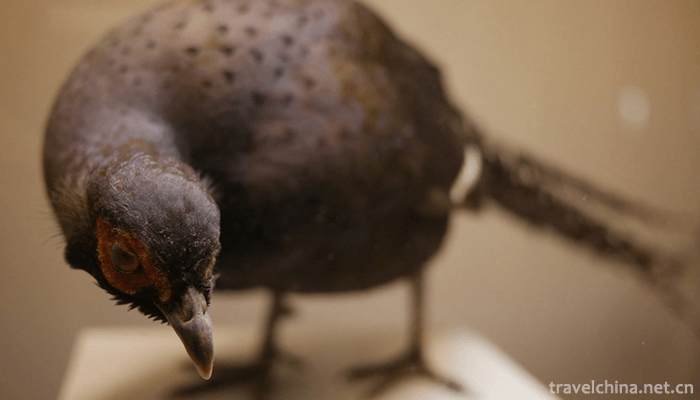
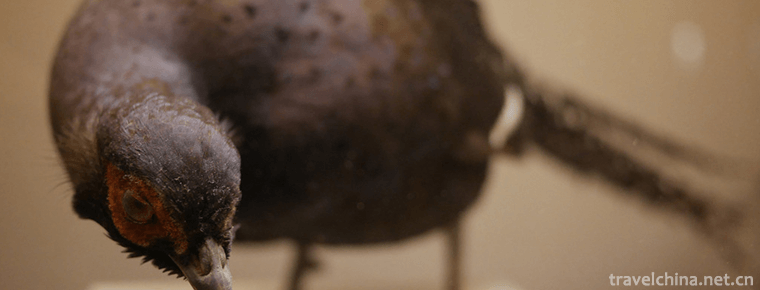
Chaoyang Bird Fossil National Geological Park
-
Jinli Street
Address:No. 231, Wuhou Temple street, Chengdu, Sichuan,China
Views: 160 Time 2018-09-29 -
Qinhuangdao Shanhaiguan Scenic Area
Shanhaiguan, also known as Yuguan, Yuguan and Linluguan, is located 15 kilometers northeast of Qinhuangdao City, Hebei Province
Views: 189 Time 2018-11-24 -
The Siberian Tiger Park
Located on the North Bank of Songhua River, the Northeast Tiger Forest Park covers an area of 1.44 million square meters and is adjacent to the Sun Island Scenic Area. Among them
Views: 205 Time 2018-12-19 -
Huangshan Yi Culture Tourist Area
Huangshan Yi Cultural Park is a national AAAA-level tourist attraction, located in the northwest of Linyi Economic and Technological Development Zone.
Views: 281 Time 2019-01-18 -
Babu Zhai soup
Babaozhai soup is a traditional dish of Guangdong Province, which belongs to Cantonese cuisine. The soup tastes elegant and light, fresh and tasty, nutritious and has strong nourishing function.
Views: 300 Time 2019-03-27 -
White Tea Making Skills Fuding White Tea Making Skills
The production technology of Fuding White Tea is the central process of creating Fuding White Tea. It has superb production method and unique scientific and artistic charm
Views: 295 Time 2019-04-03 -
March Street Dali
"Yuejie", or March Street of Dali, also known as "Guanyin City, also known as the March Meeting of Dali, today also known as the National Day of March Street, is a grand festival and st
Views: 216 Time 2019-04-23 -
Liaoning wind and percussion ensemble
Liaoning drum music, commonly known as drum music. It is one of the traditional folk instrumental music in China. Liaoning drum music is divided into Suona music and Sheng wind music, and according to
Views: 310 Time 2019-05-13 -
Miao Lusheng Dance
Lusheng dance, also known as "stepping on Lusheng" and "stepping on the singing hall", is named for its accompaniment and self-boasting dance. It spreads in the Miao, Dong, Buyi, S
Views: 176 Time 2019-06-05 -
Traveling Books in Ningbo
Ningbo Walking Book, originally known as "Lotus Document" or "Plough Document", is one of the traditional local operas in Ningbo, Zhejiang Province. Sing in Ningbo dialect. Ningbo
Views: 226 Time 2019-06-08 -
Legend of Qu Yuan
The legend of Quyuan is one of the local folklores in Zigui County, Hubei Province. The people of Zigui created and inherited folk literature with lyric and expressive expression by linking Quyuan wit
Views: 109 Time 2019-06-11 -
Chengdu Metro Line 1
Chengdu Metro Line 1 is the first metro line to be completed and put into operation in Chengdu, Sichuan Province, China. It is the first metro line opened in Western China. The first phase of the project was opened on September 27, 2010, The phase II project (Century City station to Guangdu station)
Views: 137 Time 2020-11-28

